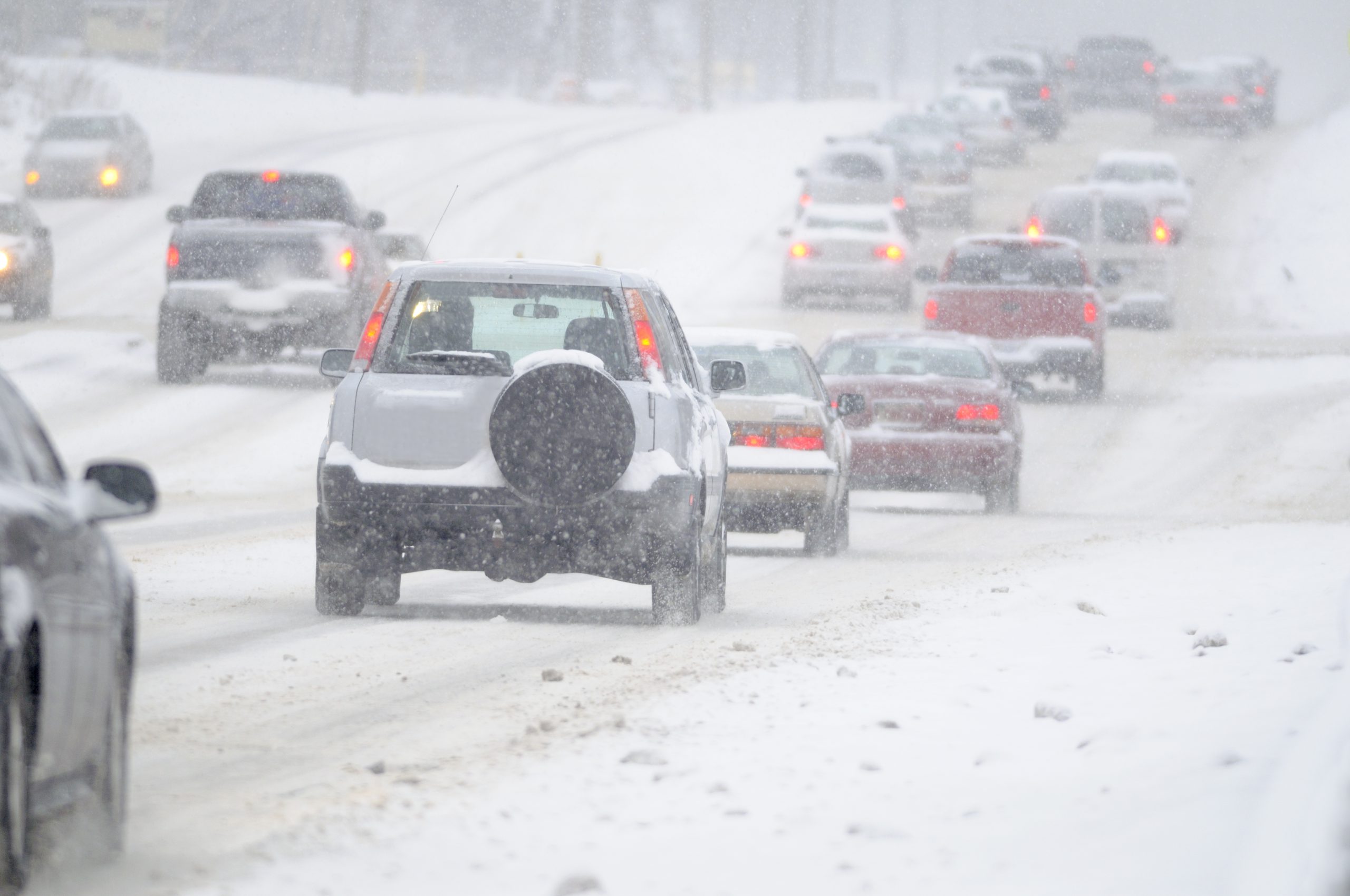Driving Safety Tips to Keep Your Employees Safe this Holiday Season
Posted on by

‘Tis the holiday season—the busiest time of year for workers in the retail and delivery industries. Sadly, more fatal crashes happen during the holidays because more people travel, drink more alcohol, and drive at unsafe speeds. [1]
Due to the seasonal rise in online shopping, many employers will hire temporary drivers for the holiday season to meet demand for delivering packages. Drivers will deliver many more packages. They may need to drive in heavy traffic and face dangerous weather-related road conditions such as snow, ice, or slush. Delivery drivers that feel pressure to deliver orders in time are more likely to be in a crash. In 2020, more than one in five of all U.S. work-related deaths happened while driving or riding in a motor vehicle on a public road. [2]
Start a Motor Vehicle Safety Program
Employers can help keep workers who drive and deliver for them safe by starting a motor vehicle safety program. [3,4] Workers who drive a motor vehicle as part of their job can be in a roadway crash, whether caused by them, the weather, or by impaired travelers.
Consider addressing these areas in your program:
Give important information
- Give workers up-to-date information about road construction or closures, bad road conditions, and other driving dangers.
- Teach workers how prescription and over-the-counter medications may affect their driving. Your company’s health and wellness program may be able to help you find and get this information to your workers.
- Give refresher hands-on driver safety training that includes defensive driving techniques such as obeying speed limits, keeping a safe distance, keeping eyes on the road, and reacting safely in bad weather.
Set policies
- Set policies that allow drivers and supervisors to decide how to improve safety while meeting the driver’s individual needs. This could involve a driver talking to supervisors about adjusting hours if the driver can’t see well at night. Or supervisors may ask drivers to stop driving if they are too tired or the weather is bad.
- Set policies that make it clear that workers should not drive if they are under the influence of alcohol or drugs (both legal and illegal) that may impair their driving.
- Set a policy that employees may not use cell phones, hands-free phones, or mobile electronic devices while driving. When drivers need cell phones or to use other devices, they should pull over to a safe place before using them.
Give drivers an emergency kit with items drivers may need to keep in their vehicle
- Ice scraper
- Blanket
- Flashlight
- Batteries
- Flares
- Jumper cables
- First aid kit
- Bottled water
- Nonperishable snacks
Give workers common safety tips on driving
- As the law requires, buckle up: every trip, every person. It takes only a second.
- Do not drive when you become fatigued. Stop and take breaks as needed.
- Keep alert and aware of your surroundings. Other drivers may be impaired, fatigued, or in a hurry to reach their destinations.
- For long drives, tell your supervisor when you expect to reach your destination and let your supervisor know when you get there.
- Check weather reports before leaving so the driver can change routes to avoid unsafe conditions.
The Bottom Line
Make sure your employees, your most important asset, get from point A to point B in the safest way possible. Don’t let safety take a holiday. Check out NIOSH Motor Vehicle Safety at Work to learn more.
Debbie Hornback, MS, is the co-chair of the NORA Wholesale and Retail Trade (WRT) Sector Council and co-coordinator of the NIOSH WRT Program. She is a health communication specialist in the NIOSH Division of Science Integration.
Karl Sieber, PhD, is a research health scientist in the NIOSH Division of Field Studies and Engineering (DFSE).
Eric G. Carbone, MBA, PhD, is chief of the Surveillance and Field Investigations Branch in the NIOSH Division of Safety Research.
Rebecca Knuth, MS, is a health communication specialist in the NIOSH Division of Safety Research, supporting the NIOSH Center for Motor Vehicle Safety.
Srinivas Konda, MPH, is an epidemiologist in the NIOSH Division of Safety Research and the assistant coordinator for the NIOSH Center for Motor Vehicle Safety.
See Also
Ergonomics Tips for the North Pole
And to All a Safe Flight: Transportation Safety Tips for Santa
Staying Safe Up on the Rooftop and in Extreme Temperatures
Protecting Temporary Workers: Best Practices for Host Employers
References
- National Center for Statistics and Analysis [2019]. Estimate of motor vehicle traffic crash fatalities for the holiday periods of 2019. Traffic safety facts. Research note. DOT HS 812 823. Washington, DC: National Highway Traffic Safety Administration.
- AmTrust Financial [2022]. Retail driving hazards. New York, NY: AMTrust Financial Services, Inc., https://amtrustfinancial.com/blog/loss-control/driving-can-be-a-hazard-for-the-retail-industry. Accessed Nov 1, 2022.
- NIOSH [2017]. Behind the wheel at work. Morgantown, WV: U.S. Department of Health and Human Services, Centers for Disease Control and Prevention, National Institute for Occupational Safety and Health, https://www.cdc.gov/niosh/motorvehicle/ncmvs/newsletter/ncmvsnewsletterv2n4.html.
- NIOSH [2019]. Motor vehicle safety at work. Morgantown, WV: U.S. Department of Health and Human Services, Centers for Disease Control and Prevention, National Institute for Occupational Safety and Health, https://www.cdc.gov/niosh/motorvehicle/resources/crashdata/facts.html
Posted on by

